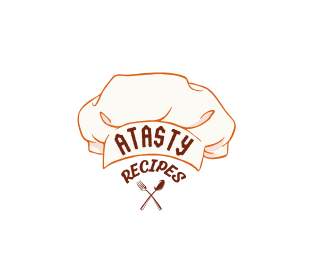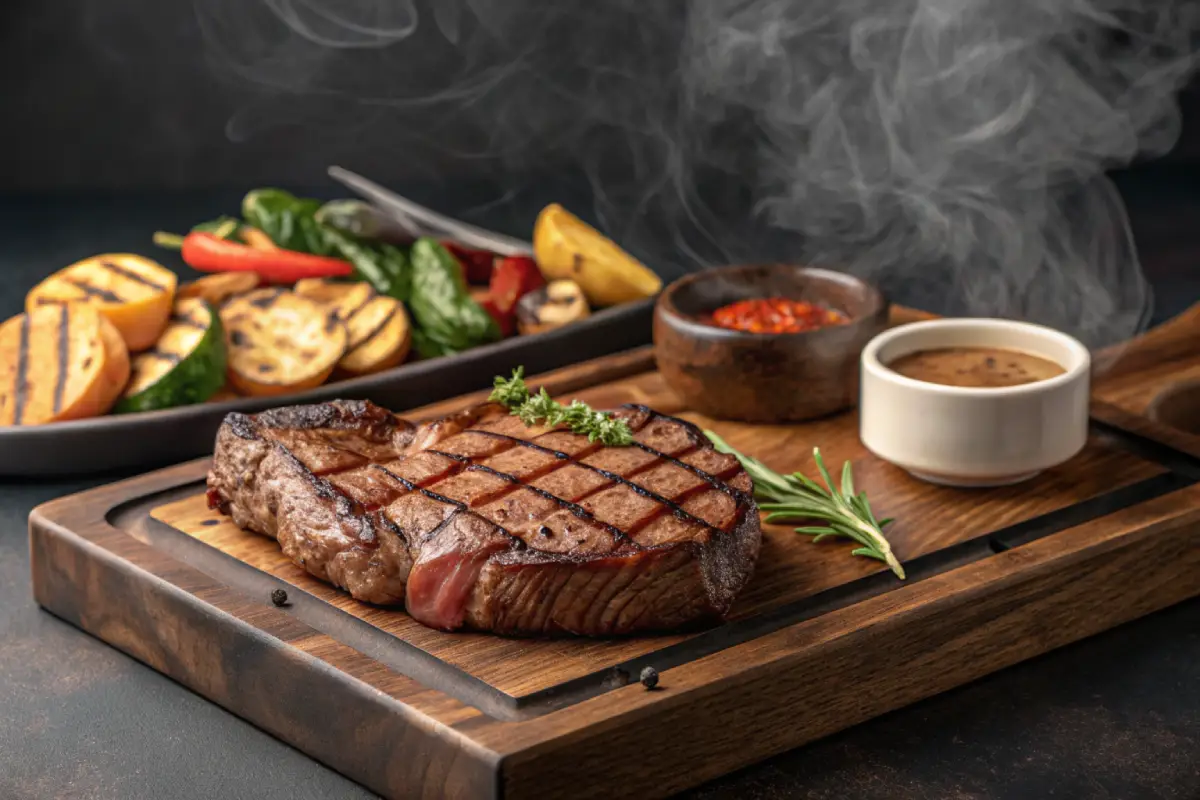Smoking a ribeye steak is a culinary journey that combines flavor, texture, and aroma in a way that transforms a simple cut of beef into an unforgettable meal. This guide is designed to help you become a smoked ribeye steak expert, from selecting the perfect cut to mastering the smoking process. Whether you’re new to smoking or looking to refine your skills, this article covers everything you need to know.
We’ll explore how to choose the best ribeye, essential preparation techniques, the smoking process itself, and tips for finishing your steak with finesse. Get ready to unlock the secrets of this savory masterpiece!
Introduction to Smoked Ribeye Steak
What Makes Ribeye the Best Cut for Smoking?
The ribeye steak stands out as one of the most flavorful cuts of beef, prized for its marbling and tender texture. The fat within the ribeye melts during the smoking process, infusing the meat with a smoky richness that’s hard to resist. The result? A juicy, tender steak bursting with flavor.
Smoking enhances the natural qualities of the ribeye, creating a deep, savory profile with a slight char on the surface. It’s a perfect balance of smoky goodness and melt-in-your-mouth tenderness.
Brief History and Popularity of Smoking Steaks
Smoking meat dates back centuries, used initially to preserve food and later celebrated for the rich, complex flavors it imparts. Today, smoking steaks has become a popular technique among barbecue enthusiasts and chefs alike. The method’s ability to elevate a ribeye’s natural flavors has made it a favorite for steak lovers everywhere.
The allure of a smoked ribeye steak lies in its ability to combine the art of barbecue with the elegance of fine dining. Whether cooked on a backyard smoker or a professional-grade setup, this steak delivers a dining experience that’s second to none.
Choosing the Perfect Ribeye Steak
Bone-in vs. Boneless: Which is Better?
When selecting a ribeye for smoking, the choice between bone-in and boneless can make a big difference. Bone-in ribeye steaks tend to have a richer flavor, as the bone acts as a natural insulator, helping the meat retain moisture. On the other hand, boneless ribeye is easier to handle and cooks more evenly, making it a practical choice for beginners.
If you’re aiming for a classic, smoky taste with maximum juiciness, opt for a bone-in ribeye. But if you prefer convenience and even cooking, boneless is your best bet. Either way, the smoked ribeye steak will be a crowd-pleaser.
How to Select High-Quality Ribeye: Marbling and Thickness
A perfect ribeye steak starts with excellent marbling. Look for visible streaks of fat running through the meat. This fat melts during smoking, adding flavor and tenderness. The steak’s thickness is also crucial; choose cuts at least 1.5 inches thick to ensure the meat doesn’t overcook during the smoking process.
Premium grades, such as USDA Prime or Wagyu, are ideal for a smoked ribeye steak. They offer superior marbling and texture, ensuring a top-tier steak experience.
Organic and Grass-fed Options
If health and sustainability are priorities, consider organic or grass-fed ribeye steaks. These cuts often have a slightly leaner profile but deliver a clean, beefy taste. Pair them with a flavorful rub to enhance their natural goodness.
Preparing the Ribeye for Smoking
Should You Marinate Ribeye Steak? Pros and Cons
Marinating a ribeye steak can enhance its flavor, but it’s not always necessary. A ribeye’s natural marbling already delivers a rich, buttery taste. However, if you want to experiment with bold flavors, a marinade made from olive oil, garlic, soy sauce, and herbs can work wonders.
On the flip side, marinating can mask the natural taste of high-quality cuts. For purists, a simple dry rub might be the best choice to let the smoked ribeye steak shine.
The Perfect Dry Rub for Smoked Ribeye (with Recipe)
A flavorful dry rub is essential for smoking. Here’s a quick recipe to elevate your smoked ribeye steak:
- 2 tablespoons kosher salt
- 1 tablespoon black pepper
- 1 teaspoon garlic powder
- 1 teaspoon smoked paprika
- ½ teaspoon cayenne pepper (optional for heat)
Rub this mixture generously over the steak, covering all sides. Let it sit for 30 minutes to allow the flavors to penetrate.
Essential Tools for Preparation
To prepare a smoked ribeye steak, you’ll need a few key tools:
- Meat thermometer: Ensures your steak reaches the ideal temperature.
- Sharp knife: Trims excess fat for even cooking.
- Smoking wood chips: Enhances flavor. Popular choices include hickory, mesquite, or applewood.
Having these tools on hand makes preparation seamless, setting you up for smoking success.

The Smoking Process Explained
Step-by-Step Guide to Smoking Ribeye Steak
Smoking a ribeye steak is as much about the process as the result. Start by preheating your smoker to 225°F. While the smoker heats, let your ribeye rest at room temperature for 20–30 minutes. This step ensures even cooking.
Place the ribeye directly on the smoker grates. If you’re using a pellet smoker or wood chips, opt for hickory or mesquite for a robust smoky flavor. Close the smoker and let the steak cook until it reaches an internal temperature of 110–115°F for medium-rare. Use a meat thermometer for accuracy.
Once your steak reaches the desired temperature, prepare for the final sear (covered in Part 5). This will lock in all the smoky goodness and give your smoked ribeye steak a beautiful crust.
Setting the Right Temperature and Time
Low and slow is the golden rule. At 225°F, smoking a ribeye can take 45 minutes to an hour, depending on its thickness. Monitoring internal temperature is key to avoiding overcooking. For a juicy, tender result, aim for medium-rare to medium doneness.
The Role of Wood Chips: Types and Flavors
Wood selection can make or break your steak’s flavor. Hickory is a classic choice for bold, smoky notes, while applewood adds a sweeter touch. Experiment with combinations to find your favorite. For a well-balanced flavor, mix cherrywood with oak.
For more delicious smoked recipes, check out the smoked leg of lamb recipe on A Tasty Recipes.
Finishing Touches: Searing, Resting, and Serving
The Reverse Sear Method for Maximum Flavor
After smoking, the reverse sear method ensures a perfect crust. Heat a cast-iron skillet or grill to high heat. Add a small amount of butter or oil to the pan, then place the ribeye in the hot skillet. Sear each side for 1–2 minutes until a golden-brown crust forms.
This final step locks in the smoky flavor while creating a beautifully caramelized exterior. It’s the secret to turning a good smoked ribeye steak into a great one.
Why Resting is Essential for Juicy Steaks
Once your steak is seared, resist the urge to cut it immediately. Resting allows the juices to redistribute throughout the meat, ensuring every bite is tender and flavorful. Cover the steak loosely with foil and let it rest for 5–10 minutes.
Serving Suggestions and Pairings
A smoked ribeye steak pairs wonderfully with roasted vegetables, garlic mashed potatoes, or a light arugula salad. For an elevated touch, drizzle a bit of chimichurri sauce or compound butter over the top. Don’t forget a glass of full-bodied red wine or a smoky bourbon to complement the flavors.
For another hearty dinner idea, try the ribeye roast ultimate guide for more inspiration.

Common Mistakes to Avoid When Smoking Ribeye
Over-Smoking: Signs and Solutions
It’s easy to think that more smoke equals more flavor, but over-smoking a smoked ribeye steak can result in a bitter taste. A good rule of thumb is to use a light smoke for most of the cooking process. Avoid adding too many wood chips at once, as this can create excessive smoke.
If you notice an overly dark crust forming too early, it’s a sign that the steak has absorbed too much smoke. Wrapping it in foil for the remainder of the cooking time can help prevent further bitterness.
Temperature Missteps and How to Avoid Them
One of the most common mistakes is cooking at the wrong temperature. Smoking requires patience—keep your smoker at a steady 225°F. Using a meat thermometer ensures your steak cooks perfectly. Avoid guessing, as even a slight temperature misstep can lead to dry or undercooked meat.
Skipping the Resting Step
Always rest your smoked ribeye steak before serving. This step is vital for keeping it juicy. Resting allows the fibers to reabsorb the juices, making every bite tender and packed with flavor.
FAQs About Smoked Ribeye Steak
How Long Does It Take to Smoke a Ribeye Steak?
Smoking a ribeye steak is a low-and-slow process that ensures tender, flavorful results. At 225°F, a ribeye generally takes about 45 minutes to an hour to cook to medium-rare, depending on its thickness. Always use a meat thermometer to monitor the internal temperature—110–115°F is perfect for medium-rare before searing. For thicker cuts, the smoking time may extend slightly, but patience pays off with a juicy, delicious steak.
Is Smoked Ribeye Good?
Absolutely! Smoking enhances the natural marbling and flavor of ribeye steak, infusing it with rich, smoky notes that elevate its taste. A well-smoked ribeye boasts a perfect balance of tenderness and bold flavor. If you’re a steak lover, a smoked ribeye steak is a must-try experience. It’s a favorite among barbecue enthusiasts for good reason.
Is It Better to Grill or Smoke a Steak?
Both grilling and smoking have their merits, but it depends on what you’re after. Grilling offers a quick cooking method and creates a charred crust, ideal for a traditional steakhouse flavor. Smoking, on the other hand, slowly cooks the steak while infusing it with deep, smoky richness. For those who love bold, layered flavors, a smoked ribeye steak wins every time.
Can I Smoke a Steak and Sear It Later?
Yes, and this method is called reverse searing. After smoking the ribeye to your desired internal temperature, you can rest it and then sear it later to create a caramelized crust. This technique is ideal if you want to prepare the steak ahead of time and finish it quickly when ready to serve. Just make sure to bring the steak to room temperature before searing for the best results.
Conclusion
Smoking a ribeye steak is more than just cooking; it’s an art form that brings out the best in this premium cut of beef. From choosing the perfect steak with rich marbling to mastering the preparation and smoking process, every step contributes to the unforgettable flavor of a perfectly smoked ribeye steak.
The low-and-slow smoking method enhances the natural richness of ribeye, creating a tender, juicy steak infused with smoky goodness. The reverse sear technique adds a delicious crust, while resting ensures the steak retains its juices for maximum flavor. Whether you prefer a bold hickory smoke or a sweeter applewood note, the choice of wood chips allows you to customize the flavor to your liking.
This guide has provided you with the tools and tips to succeed in crafting your perfect smoked ribeye steak, avoiding common pitfalls and ensuring consistent results. Whether you’re a seasoned pitmaster or a beginner, the joy of biting into a flavorful, smoky steak is an experience you’ll want to repeat.
Now it’s your turn to fire up the smoker and put these tips to use. With patience and attention to detail, you’re just steps away from steak perfection. Happy smoking, and enjoy your masterpiece!

